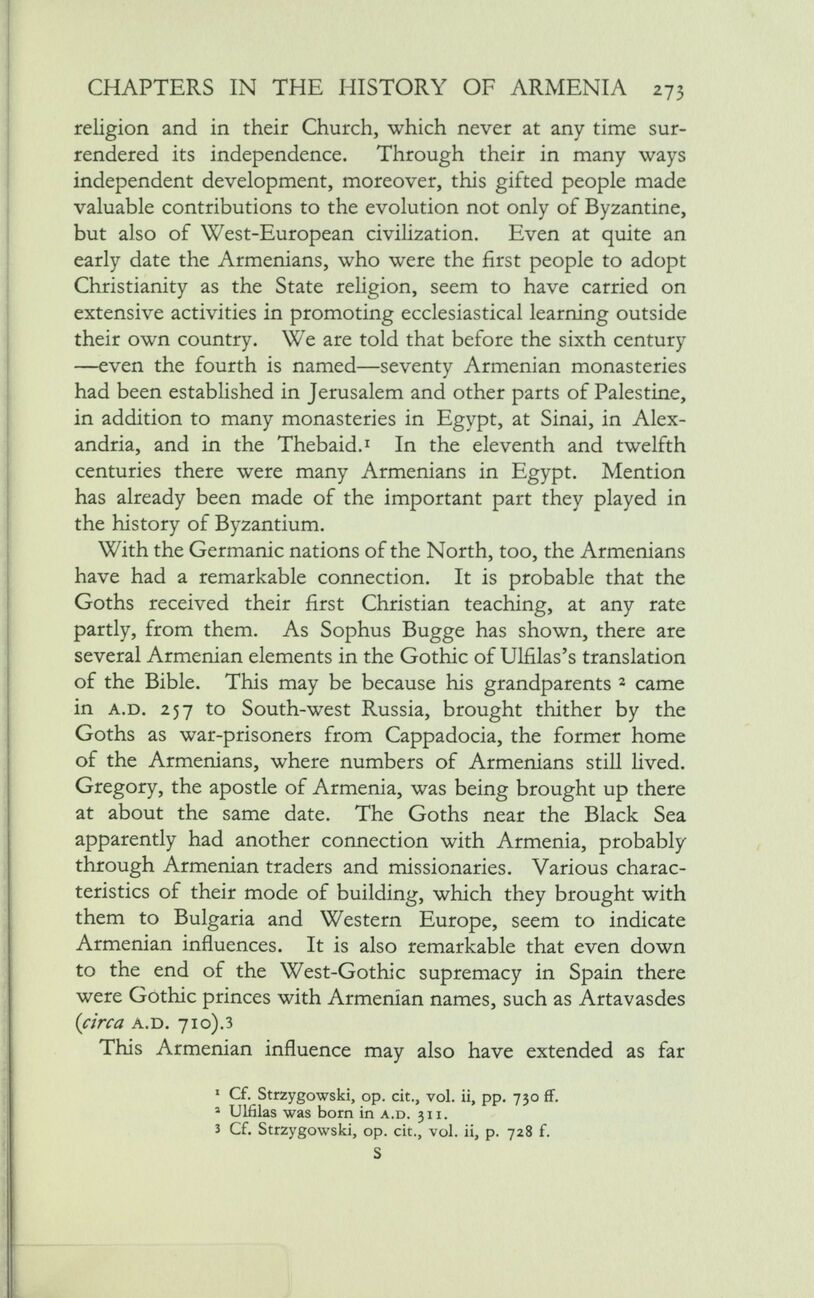
Full resolution (JPEG) - On this page / på denna sida - X. Chapters in the history of Armenia

<< prev. page << föreg. sida << >> nästa sida >> next page >>
Below is the raw OCR text
from the above scanned image.
Do you see an error? Proofread the page now!
Här nedan syns maskintolkade texten från faksimilbilden ovan.
Ser du något fel? Korrekturläs sidan nu!
This page has never been proofread. / Denna sida har aldrig korrekturlästs.
CHAPTERS IN THE HISTORY OF ARMENIA 273
religion and in their Church, which never at any time sur
rendered its independence. Through their in many ways
independent development, moreover, this gifted people made
valuable contributions to the evolution not only of By2antine,
but also of West-European civilization. Even at quite an
early date the Armenians, who were the first people to adopt
Christianity as the State religion, seem to have carried on
extensive activities in promoting ecclesiastical learning outside
their own country. Wc are told that before the sixth century
—even the fourth is named—seventy Armenian monasteries
had been established in Jerusalem and other parts of Palestine,
in addition to many monasteries in Egypt, at Sinai, in Alex
andria, and in the Thebaid. 1 In the eleventh and twelfth
centuries there were many Armenians in Egypt. Mention
has already been made of the important part they played in
the history of Byzantium.
With the Germanic nations of the North, too, the Armenians
have had a remarkable connection. It is probable that the
Goths received their first Christian teaching, at any rate
partly, from them. As Sophus Bugge has shown, there are
several Armenian elements in the Gothic of Ulfilas’s translation
of the Bible. This may be because his grandparents 2 came
in a.d. 257 to South-west Russia, brought thither by the
Goths as war-prisoners from Cappadocia, the former home
of the Armenians, where numbers of Armenians still lived.
Gregory, the apostle of Armenia, was being brought up there
at about the same date. The Goths near the Black Sea
apparently had another connection with Armenia, probably
through Armenian traders and missionaries. Various charac
teristics of their mode of building, which they brought with
them to Bulgaria and Western Europe, seem to indicate
Armenian influences. It is also remarkable that even down
to the end of the West-Gothic supremacy in Spain there
were Gothic princes with Armenian names, such as Artavasdes
(area a.d. 710).3
This Armenian influence may also have extended as far
1 Cf. Strzygowski, op. eit., vol. ii, pp. 730 ff.
1 Ulfilas was born in a.d. 311.
3 Cf. Strzygowski, op. eit., vol. ii, p. 728 f.
S
<< prev. page << föreg. sida << >> nästa sida >> next page >>